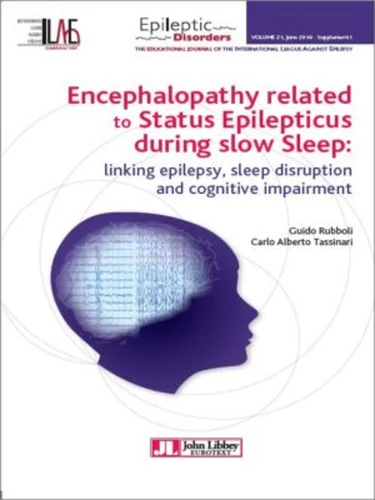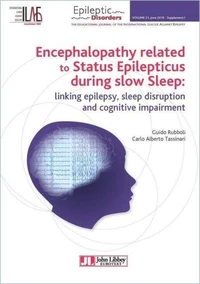Encephalopathy related to status epilepticus during slow sleep. linking epilepsy, sleep disruption, and cognitive impairment
Par : ,Formats :
- Paiement en ligne :
- Livraison à domicile ou en point Mondial Relay indisponible
- Retrait Click and Collect en magasin gratuit
- Réservation en ligne avec paiement en magasin :
- Indisponible pour réserver et payer en magasin
- Nombre de pages126
- PrésentationBroché
- FormatGrand Format
- Poids0.278 kg
- Dimensions17,0 cm × 24,0 cm × 0,7 cm
- ISBN978-2-7420-1616-7
- EAN9782742016167
- Date de parution07/12/2019
- ÉditeurJohn Libbey Eurotext
Résumé
Encephalopathy with Electrical Status Epilepticus during Sleep (ESES)" was described almost 50 years ago ; however its clinical spectrum and its boundaries, the diagnostic criteria, the pathophysiology and the therapeutic management are still debated. In the last years, clinical data, neurophysiological and imaging investigations, as well as genetic studies have renewed the interest on ESES. In addition, experimental findings from sleep research have opened fascinating perspectives on some possible pathophysiological mechanisms involved in this condition.
These issues are presented and discussed in this book by clinicians, neurophysiologists, sleep physiologists and geneticists. They all have been working on ESES with the aim to provide an updated overview of this special syndrome in the light of recent research.
These issues are presented and discussed in this book by clinicians, neurophysiologists, sleep physiologists and geneticists. They all have been working on ESES with the aim to provide an updated overview of this special syndrome in the light of recent research.
Encephalopathy with Electrical Status Epilepticus during Sleep (ESES)" was described almost 50 years ago ; however its clinical spectrum and its boundaries, the diagnostic criteria, the pathophysiology and the therapeutic management are still debated. In the last years, clinical data, neurophysiological and imaging investigations, as well as genetic studies have renewed the interest on ESES. In addition, experimental findings from sleep research have opened fascinating perspectives on some possible pathophysiological mechanisms involved in this condition.
These issues are presented and discussed in this book by clinicians, neurophysiologists, sleep physiologists and geneticists. They all have been working on ESES with the aim to provide an updated overview of this special syndrome in the light of recent research.
These issues are presented and discussed in this book by clinicians, neurophysiologists, sleep physiologists and geneticists. They all have been working on ESES with the aim to provide an updated overview of this special syndrome in the light of recent research.


